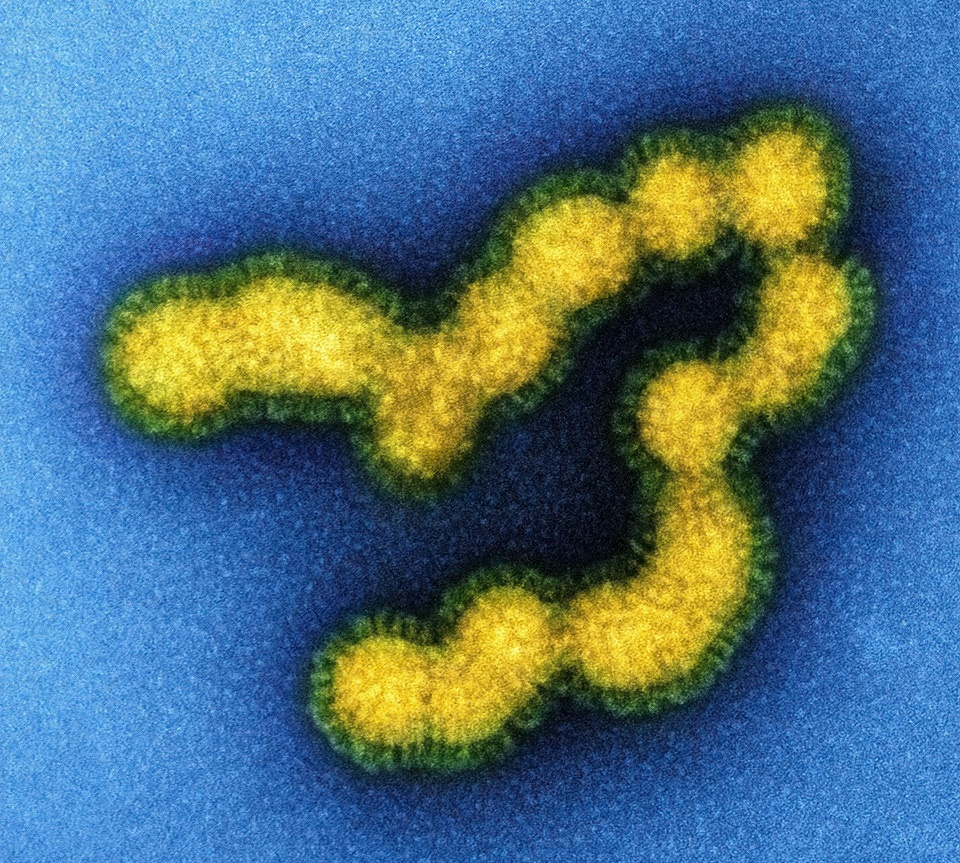China experienced its most significant chikungunya virus outbreak on record during the summer of 2025, marking an unprecedented public health challenge for the nation. Beginning in July in the city of Foshan within Guangdong Province, the mosquito-borne illness rapidly spread throughout southern China, infecting more than ten thousand people within just weeks. The explosive nature of this outbreak has prompted urgent public health responses, travel advisories from international health agencies, and renewed global concerns about emerging infectious diseases in an era of climate change and increased international connectivity.
The outbreak began on July 8, 2025, when health officials in Foshan identified the first confirmed cases of chikungunya fever in the community. Within the initial two weeks, authorities documented over three thousand confirmed infections, with cases concentrated primarily in the Shunde District of Foshan. By late August 2025, the total case count exceeded ten thousand across Guangdong Province, establishing this event as China’s largest recorded chikungunya epidemic. The rapid transmission raised alarm bells among epidemiologists worldwide, as chikungunya had historically not been endemic to this region of China.
Health authorities across multiple countries have responded to the outbreak with heightened surveillance measures and public health warnings. The United States Centers for Disease Control and Prevention issued a Level 2 travel health notice for Guangdong Province, advising travelers to practice enhanced precautions including the use of insect repellents and mosquito avoidance strategies. Similarly, the World Health Organization released warnings on July 22, 2025, indicating that billions of people globally now face increased risk from the virus due to its rapid transmission capabilities and expanding geographic range.
Understanding the Chikungunya Virus and Disease Transmission
Chikungunya virus represents an arbovirus belonging to the Alphavirus genus within the Togaviridae family, characterized by its single-stranded, positive-sense RNA genome and enveloped structure. The virus derives its name from the Makonde language of Tanzania, where it translates to “that which bends” or “to twist,” a vivid description referencing the severe joint pain and stooped posture frequently observed in infected individuals. First identified in Tanzania in 1952 and subsequently isolated in Thailand in 1958, chikungunya has emerged as a growing global health concern over the past two decades.
The primary vectors responsible for chikungunya transmission are two species of Aedes mosquitoes: Aedes aegypti and Aedes albopictus. These day-biting mosquitoes, also known as yellow fever mosquitoes and Asian tiger mosquitoes respectively, thrive in tropical and subtropical environments and are widely distributed across multiple continents. Unlike diseases that spread through direct human-to-human contact, chikungunya requires a mosquito vector for transmission. When a mosquito bites an infected person during the viremic period, typically occurring during the first week of illness, the mosquito becomes infected with the virus. After an incubation period within the mosquito, the insect can then transmit the pathogen to other humans through subsequent blood meals.
The virus has evolved into three major genetic lineages: the West African genotype, the East-Central-South African genotype, and the Asian genotype. Genomic analysis of samples from the Foshan outbreak revealed that the circulating strain belonged to the West African genotype, specifically isolated from Aedes albopictus mosquitoes in the region. This finding provided crucial insights into the outbreak dynamics and helped researchers understand how the virus established itself in a previously non-endemic area. Scientific investigations have demonstrated that certain viral mutations, particularly the E1-A226V mutation in one of the envelope glycoproteins, can significantly enhance transmission efficiency in Aedes albopictus mosquitoes, potentially contributing to explosive outbreak scenarios.
Clinical Manifestations and Symptoms of Chikungunya Fever
Chikungunya infection produces a distinctive clinical presentation that begins approximately three to seven days following the bite of an infected mosquito. The most characteristic symptom involves acute onset of severe polyarthralgia, or joint pain affecting multiple joints simultaneously, which occurs in more than ninety percent of symptomatic cases. This debilitating joint pain typically affects the hands, wrists, ankles, and feet, though it can involve any joint in the body. The intensity of the pain often proves incapacitating, significantly limiting mobility and preventing affected individuals from performing routine daily activities.
Accompanying the joint pain, patients typically experience sudden high fever, often reaching temperatures of 102 to 104 degrees Fahrenheit or 39 to 40 degrees Celsius. Additional common symptoms include severe headaches, muscle aches throughout the body, joint swelling particularly noticeable in the hands and feet, profound fatigue that persists even with rest, nausea potentially accompanied by vomiting, and a characteristic maculopapular rash that typically appears two to five days after fever onset. The rash generally begins on the trunk and spreads to the extremities, though it may also affect the face and palms.
For most individuals, acute symptoms resolve within seven to ten days following onset, with fever typically subsiding after a few days and other symptoms gradually improving. However, a substantial proportion of patients, estimated at approximately forty percent, experience persistent joint pain and stiffness that can continue for months or even years beyond the initial infection. This chronic arthralgia, sometimes referred to as chronic chikungunya arthritis, represents the most significant long-term complication of the disease and can substantially impact quality of life, work productivity, and physical functioning. The chronic joint manifestations may fluctuate in intensity and can involve periods of remission followed by symptom recurrence.
During the Foshan outbreak, clinical presentations aligned with typical chikungunya fever patterns, featuring acute fever, arthralgia, and rash as the predominant symptoms. Notably, health authorities reported no severe complications or deaths directly attributable to the infection during this epidemic. This favorable outcome profile reflects chikungunya’s generally low mortality rate, though certain populations face elevated risk for more serious disease manifestations. Newborns infected around the time of birth through maternal-fetal transmission, older adults aged sixty-five years and above, and individuals with underlying chronic medical conditions such as diabetes, cardiovascular disease, or hypertension demonstrate increased vulnerability to severe complications including neurological manifestations, cardiac complications, and hemorrhagic symptoms.
Epidemiological Analysis of the Guangdong Outbreak
The 2025 chikungunya outbreak in Guangdong Province emerged against a backdrop of specific environmental and ecological conditions that facilitated rapid viral transmission. Several weeks of sustained rainfall combined with elevated humidity levels in the region during June and early July 2025 created optimal breeding conditions for Aedes mosquitoes. Standing water accumulated in various urban and suburban locations including discarded containers, flower pots, construction sites, and drainage systems provided abundant larval habitats. These environmental factors enabled mosquito populations to expand dramatically, setting the stage for efficient disease transmission once the virus entered the community.
The majority of confirmed cases, exceeding 3,600 infections, concentrated in the Shunde District of Foshan city, suggesting intense focal transmission within this geographic area. However, the outbreak did not remain confined to Foshan, with additional cases documented in other major cities throughout Guangdong Province including Guangzhou and Shenzhen. The virus also crossed administrative boundaries, with travel-associated cases identified in the nearby territories of Macao, Hong Kong, and Taiwan, as well as the neighboring province of Guangxi. This geographic spread highlighted the role of human mobility in facilitating viral dissemination beyond the initial outbreak epicenter.
Epidemiologists investigating the outbreak worked to determine whether the cases resulted from local emergence of the virus or introduction from imported sources. The detection of chikungunya in southern China, a region where the disease has not been traditionally endemic, raised important questions about the origins of the outbreak. Evidence suggested that either the virus was imported by travelers and subsequently found favorable conditions for sustained local transmission, or gaps in surveillance systems may have previously missed earlier viral introductions. The presence of competent mosquito vectors in the region, combined with a largely immunologically naive population without prior chikungunya exposure, created conditions conducive to explosive epidemic spread once the virus became established.
Public Health Response and Containment Measures
Chinese health authorities implemented a comprehensive multi-pronged response strategy aimed at containing the outbreak and preventing further transmission. The public health intervention incorporated expanded diagnostic testing capabilities using polymerase chain reaction technology to rapidly identify infected individuals. Authorities established isolation protocols requiring confirmed cases to remain in mosquito-proof facilities during the acute viremic phase, typically the first week of illness when patients can transmit the virus to feeding mosquitoes. This measure aimed to break the transmission cycle by preventing infected individuals from serving as sources for mosquito infection.
Vector control initiatives formed a cornerstone of the outbreak response, with authorities launching intensive mosquito surveillance and elimination campaigns throughout affected areas. Control measures included widespread use of insecticides targeting adult mosquitoes, application of larvicides to water sources harboring mosquito larvae, and community-wide campaigns encouraging residents to remove standing water from properties. Public health officials distributed educational materials instructing residents to eliminate potential mosquito breeding sites by emptying containers, cleaning gutters, properly disposing of tires and other debris, and covering water storage vessels.
Some jurisdictions implemented innovative vector control approaches including deployment of anti-mosquito drones equipped with insecticide delivery systems to reach areas difficult to access through conventional spraying methods. Additionally, authorities introduced biological control measures such as releasing larvae-eating fish into water bodies to naturally reduce mosquito populations. These integrated vector management strategies sought to rapidly reduce mosquito densities and interrupt ongoing transmission chains.
Province-wide public information campaigns urged residents to adopt personal protective measures against mosquito bites. Recommendations emphasized using insect repellents containing DEET, IR3535, or icaridin on exposed skin surfaces according to product label instructions. Health messaging encouraged wearing long-sleeved shirts, long pants, shoes, and socks when outdoors, particularly during dawn and dusk hours when Aedes mosquitoes demonstrate peak biting activity. Authorities advised installing or repairing window and door screens to prevent mosquitoes from entering homes and using insecticide-treated bed nets for individuals sleeping during daytime hours.
Global Context and International Implications
The Foshan outbreak occurred within a broader context of expanding chikungunya activity worldwide during 2025. By July 2025, health authorities across sixteen countries and territories had reported approximately 240,000 chikungunya cases and ninety deaths, underscoring the virus’s significant global disease burden. South America experienced particularly intense transmission during the first half of 2025, with Brazil, Paraguay, Argentina, Bolivia, Peru, and Guatemala all documenting substantial case numbers and prolonged epidemic duration. Countries in other regions including Mauritius, Kenya, France, Italy, Mayotte Island, and Singapore also reported chikungunya transmission during this period.
The outbreak in France’s overseas department of La Réunion proved especially concerning, with more than twenty thousand total cases including over five thousand infections reported in a single week during the epidemic’s peak. This outbreak expanded across the Southwest Indian Ocean region, with autochthonous transmission documented in Mauritius and imported cases identified in Mayotte. The intensity of transmission in La Réunion prompted French health authorities to implement emergency vaccination programs and enhanced vector control measures.
The proliferation of chikungunya outbreaks across multiple continents during 2025 reflects several interconnected factors driving disease emergence and spread. Climate change has expanded the geographic range suitable for Aedes mosquitoes, with warming temperatures allowing these tropical species to establish populations in previously unsuitable temperate regions. Urbanization creates abundant mosquito breeding sites in densely populated areas where humans and vectors come into close contact. International travel enables rapid movement of infected individuals across vast distances, facilitating viral introduction into new geographic areas. These factors collectively contribute to chikungunya’s evolution into an increasingly global health threat.
Risk Assessment for International Travelers
The outbreak in Guangdong Province prompted international health agencies to issue travel advisories alerting travelers to the elevated risk of chikungunya infection in southern China. The United States CDC designated the outbreak area as Level 2 on its travel health notice system, indicating travelers should practice enhanced precautions to protect against mosquito bites. The advisory specifically targeted Guangdong Province, with particular emphasis on Foshan city where the majority of cases occurred. Travelers planning visits to affected areas received recommendations to reconsider nonessential travel, particularly for individuals at higher risk of severe disease including pregnant women, elderly persons, and those with chronic medical conditions.
For travelers who proceeded with trips to outbreak-affected regions, health authorities emphasized multiple protective strategies. Vaccination emerged as an important prevention tool, with health officials recommending that eligible travelers receive chikungunya vaccine prior to departure, ideally at least fourteen days before travel to allow adequate time for immune response development. Use of EPA-registered insect repellents containing effective active ingredients represented another critical prevention measure. Travelers received guidance to apply repellents to exposed skin surfaces and to reapply according to product instructions, particularly after swimming or excessive perspiration. Wearing protective clothing including long-sleeved shirts, long pants, and closed-toe shoes provided physical barriers against mosquito bites. Travelers were advised to stay in accommodations featuring air conditioning or properly screened windows and doors to minimize indoor mosquito exposure.
Medical Management and Treatment Approaches
No specific antiviral medications exist to directly combat chikungunya virus infection, rendering clinical management primarily supportive in nature. Healthcare providers focus treatment strategies on alleviating symptoms and providing comfort measures while the immune system naturally clears the infection. The cornerstone of symptom management involves use of antipyretic and analgesic medications to control fever and reduce pain. Acetaminophen, also known as paracetamol, represents the first-line pharmacological therapy for fever reduction and pain relief in chikungunya patients.
Medical professionals exercise caution regarding use of nonsteroidal anti-inflammatory drugs during the acute phase of illness, particularly in geographic areas where dengue virus co-circulates with chikungunya. Both viruses share common mosquito vectors and can produce similar clinical presentations during early stages of illness, making differentiation challenging without specific diagnostic testing. Because dengue infection can cause hemorrhagic complications, and NSAIDs may increase bleeding risk, healthcare providers typically defer NSAID administration until dengue has been definitively ruled out through laboratory testing. Once dengue exclusion is confirmed, NSAIDs may be prescribed to address inflammatory components of chikungunya, particularly for management of severe joint pain and swelling.
Patients receive counseling on general supportive care measures including adequate rest to allow the body to recover, maintenance of proper hydration through increased fluid intake including water, oral rehydration solutions, soups, and fruit juices, and avoidance of strenuous physical activity during the acute illness phase. For individuals developing chronic arthralgia following resolution of acute infection, treatment approaches may incorporate continued NSAID therapy, corticosteroid medications including topical preparations for localized joint inflammation, and physical therapy interventions to maintain joint mobility and function. Some patients benefit from occupational therapy to develop strategies for managing persistent symptoms while maintaining daily activities and work responsibilities.
Diagnostic Testing and Laboratory Confirmation
Confirmation of chikungunya infection relies on laboratory testing methods that detect either the virus itself or the immune response to infection. During the acute phase of illness, typically within the first eight days following symptom onset, reverse transcription polymerase chain reaction testing can identify viral RNA in blood samples. This molecular diagnostic approach offers high sensitivity and specificity for acute infection detection. As the illness progresses beyond the first week, serological testing becomes the preferred diagnostic method. These assays detect chikungunya-specific antibodies in serum, with IgM antibodies appearing within the first week of illness and persisting for several months. IgG antibodies develop slightly later but provide evidence of past infection and generally remain detectable for years following recovery.
Healthcare providers considering chikungunya diagnosis typically conduct thorough clinical evaluations including detailed travel histories to identify potential exposure in endemic or outbreak-affected regions. Physical examination findings supporting chikungunya diagnosis include the characteristic distribution of joint involvement, presence of maculopapular rash, and absence of findings suggestive of alternative diagnoses. Laboratory evaluation beyond chikungunya-specific testing may include complete blood counts, which often reveal lymphopenia and thrombocytopenia in chikungunya patients, and assessment of inflammatory markers such as erythrocyte sedimentation rate and C-reactive protein, which typically demonstrate elevation during acute infection.
Prevention Strategies and Vaccination Development
Prevention of chikungunya infection historically relied exclusively on mosquito bite avoidance measures, as no vaccines existed until recently. However, the landscape of chikungunya prevention transformed dramatically in 2023 and 2025 with the licensure of two distinct vaccine products in multiple countries. These vaccines represent significant scientific achievements following decades of research and development efforts aimed at creating effective immunization tools against this debilitating disease.
The first licensed chikungunya vaccine, marketed as IXCHIQ and manufactured by Valneva Austria GmbH, received approval from the United States Food and Drug Administration in November 2023 for use in individuals aged eighteen years and older who face increased risk of chikungunya virus exposure. This vaccine utilizes a live-attenuated approach, incorporating a weakened form of the chikungunya virus containing a specific deletion in the nonstructural protein 3 region of the viral genome. The genetic modification renders the virus unable to cause disease while maintaining its ability to stimulate protective immune responses. IXCHIQ is administered as a single intramuscular injection, generating robust neutralizing antibody responses in the majority of vaccinated individuals.
Clinical trial data for IXCHIQ demonstrated seroresponse rates, defined as development of protective antibody levels, of ninety-eight percent among individuals aged twelve to sixty-four years and eighty-seven percent in those aged sixty-five years and older at three weeks post-vaccination. By six months following vaccination, seroresponse rates measured eighty-five percent and seventy-six percent for these respective age groups. Common adverse reactions reported by trial participants included injection site tenderness, headache, fatigue, myalgia, arthralgia, fever, and nausea occurring in more than ten percent of recipients. More concerning, the vaccine caused severe or prolonged chikungunya-like adverse reactions in some individuals, particularly older adults with underlying medical conditions.
Safety concerns emerged following IXCHIQ’s initial deployment, with postmarketing surveillance identifying serious adverse events including hospitalizations for cardiac manifestations such as atrial flutter and neurological complications including meningitis and encephalitis. These events occurred predominantly among individuals aged sixty-five years and older, many of whom had multiple chronic medical conditions. On May 9, 2025, FDA and CDC jointly recommended a pause in IXCHIQ administration to persons aged sixty years and older while regulatory authorities investigated these safety signals. Following comprehensive benefit-risk analysis, FDA lifted the pause on August 6, 2025, but implemented significant restrictions including contraindication for most routine United States travelers and designation of age sixty-five years and older as a precaution for vaccination. Tragically, on August 22, 2025, FDA suspended the United States license for IXCHIQ based on continued safety concerns including one death from vaccine strain-associated encephalitis and more than twenty serious adverse events consistent with chikungunya-like illness.
The second licensed chikungunya vaccine, VIMKUNYA manufactured by Bavarian Nordic, received FDA approval on February 14, 2025, and European Commission authorization on February 28, 2025. This vaccine employs virus-like particle technology, utilizing molecules that closely resemble the chikungunya virus structure but do not contain viral genetic material and cannot replicate or cause infection. VIMKUNYA demonstrates advantages over the live-attenuated approach including absence of replication risk, suitability for use in immunocompromised populations and pregnant women, and availability in a ready-to-use prefilled syringe format enhancing ease of administration. The vaccine received approval for individuals aged twelve years and older, expanding protection to adolescent populations.
Clinical trials evaluating VIMKUNYA safety and immunogenicity enrolled thousands of participants across multiple age groups. The vaccine demonstrated favorable safety profiles with common adverse reactions similar to those observed with other vaccines including injection site reactions, headache, fatigue, and muscle aches. Importantly, VIMKUNYA did not produce the severe chikungunya-like adverse reactions observed with IXCHIQ. Immunogenicity data revealed robust neutralizing antibody responses following single-dose administration, with protection developing within weeks of vaccination.
Current Vaccination Recommendations and Accessibility
United States vaccination guidance, as updated by the Advisory Committee on Immunization Practices in 2025, recommends chikungunya vaccination for specific populations at elevated risk of virus exposure. High-priority groups include travelers visiting areas experiencing active chikungunya outbreaks, where ongoing community transmission creates substantial infection risk. Additionally, vaccination receives recommendation for laboratory workers handling live chikungunya virus who face occupational exposure risk. For travelers visiting or relocating to regions with documented chikungunya transmission within the past five years but without current outbreak status, vaccination may be considered based on individual risk assessment incorporating factors such as duration of stay, likelihood of mosquito exposure, presence of underlying medical conditions, and personal preferences regarding immunization.
Following the safety concerns and subsequent license suspension of IXCHIQ in the United States, VIMKUNYA has become the primary chikungunya vaccine available for American travelers. Healthcare providers counsel eligible individuals about vaccination benefits and risks, discuss mosquito bite prevention strategies, and develop personalized prevention plans based on specific travel itineraries and individual risk profiles. Vaccine supply and accessibility vary internationally, with availability differing across countries and regions. Some nations have not yet approved chikungunya vaccines for use, limiting prevention options to vector control and bite avoidance measures.
Long-Term Implications and Future Preparedness
The 2025 chikungunya outbreak in China serves as a powerful reminder of evolving infectious disease threats in the twenty-first century. The emergence of this significant outbreak in a previously non-endemic region illustrates how environmental changes, urbanization patterns, and global connectivity create conditions favorable for arbovirus establishment in new territories. Climate change continues expanding the geographic range suitable for Aedes mosquitoes, with projections suggesting continued northward spread of these vectors into previously temperate zones. This expansion places billions of additional people at risk for mosquito-borne diseases including chikungunya, dengue, and Zika viruses.
The outbreak underscored critical gaps in chikungunya preparedness including limitations in diagnostic testing capacity, insufficient vector surveillance systems in regions without historical transmission, incomplete understanding of factors driving outbreak emergence, and challenges in rapidly implementing effective control measures once transmission becomes established. Addressing these vulnerabilities requires sustained investments in public health infrastructure, arbovirus surveillance networks, vector monitoring programs, and research initiatives investigating viral evolution, mosquito biology, and host immunity.
Genomic surveillance emerged as a valuable tool during the Guangdong outbreak, enabling researchers to characterize circulating viral strains, trace transmission pathways, identify concerning mutations potentially affecting transmissibility or disease severity, and monitor for evidence of viral adaptation to local mosquito populations. Expanded genomic surveillance capacity both for viruses and vector mosquitoes provides critical intelligence supporting evidence-based public health decision-making during outbreaks. Similarly, integrated surveillance systems combining epidemiological data, clinical information, laboratory testing results, and entomological monitoring offer comprehensive situational awareness essential for coordinated outbreak response.
The development and licensure of chikungunya vaccines represents significant progress, though challenges remain regarding vaccine deployment, accessibility, and optimal use strategies. Questions persist about vaccine effectiveness across diverse populations and viral genotypes, duration of protection requiring potential booster doses, appropriate vaccination strategies for endemic versus outbreak settings, and approaches for vaccine delivery in resource-limited environments. Ongoing research and postmarketing surveillance continue generating evidence to inform vaccination policies and optimize prevention programs.
Conclusion
The 2025 chikungunya virus outbreak in Guangdong Province, China, represents a watershed moment in the global response to emerging arboviral diseases. Beginning in July in Foshan city and rapidly expanding to affect more than ten thousand individuals by late summer, the outbreak demonstrated the explosive transmission potential of chikungunya when introduced into susceptible populations with abundant competent mosquito vectors. The epidemic prompted comprehensive public health responses incorporating enhanced surveillance, aggressive vector control campaigns, case isolation measures, and international travel advisories aimed at containing spread and protecting vulnerable populations.
Clinical manifestations during the outbreak aligned with typical chikungunya disease presentations, featuring debilitating joint pain, high fever, and characteristic rash. While most cases resolved within days to weeks without serious complications, the outbreak highlighted the substantial morbidity associated with chikungunya, particularly the chronic arthralgia affecting significant proportions of patients months or years following acute infection. The absence of specific antiviral treatments underscores the importance of prevention strategies including mosquito bite avoidance and vaccination for eligible individuals traveling to affected regions.
The availability of two licensed chikungunya vaccines, IXCHIQ and VIMKUNYA, expanded prevention options, though safety concerns regarding IXCHIQ led to restrictions and eventual license suspension in the United States. VIMKUNYA’s virus-like particle platform offers promise for safe and effective immunization, particularly for travelers at heightened exposure risk. However, vaccine accessibility remains limited in many parts of the world, and questions persist regarding optimal deployment strategies and long-term effectiveness.
Looking forward, the Guangdong outbreak serves as a sobering reminder of the growing risks posed by vector-borne viruses in an era of climate change, urbanization, and global connectivity. The episode emphasizes the critical importance of maintaining robust arbovirus surveillance systems, investing in vector control infrastructure, supporting vaccine research and development, and fostering international collaboration on emerging infectious disease threats. As environmental and demographic trends continue creating favorable conditions for arbovirus transmission, sustained vigilance, preparedness, and coordinated public health action will prove essential for protecting global populations from chikungunya and related mosquito-borne illnesses in the coming decades.













